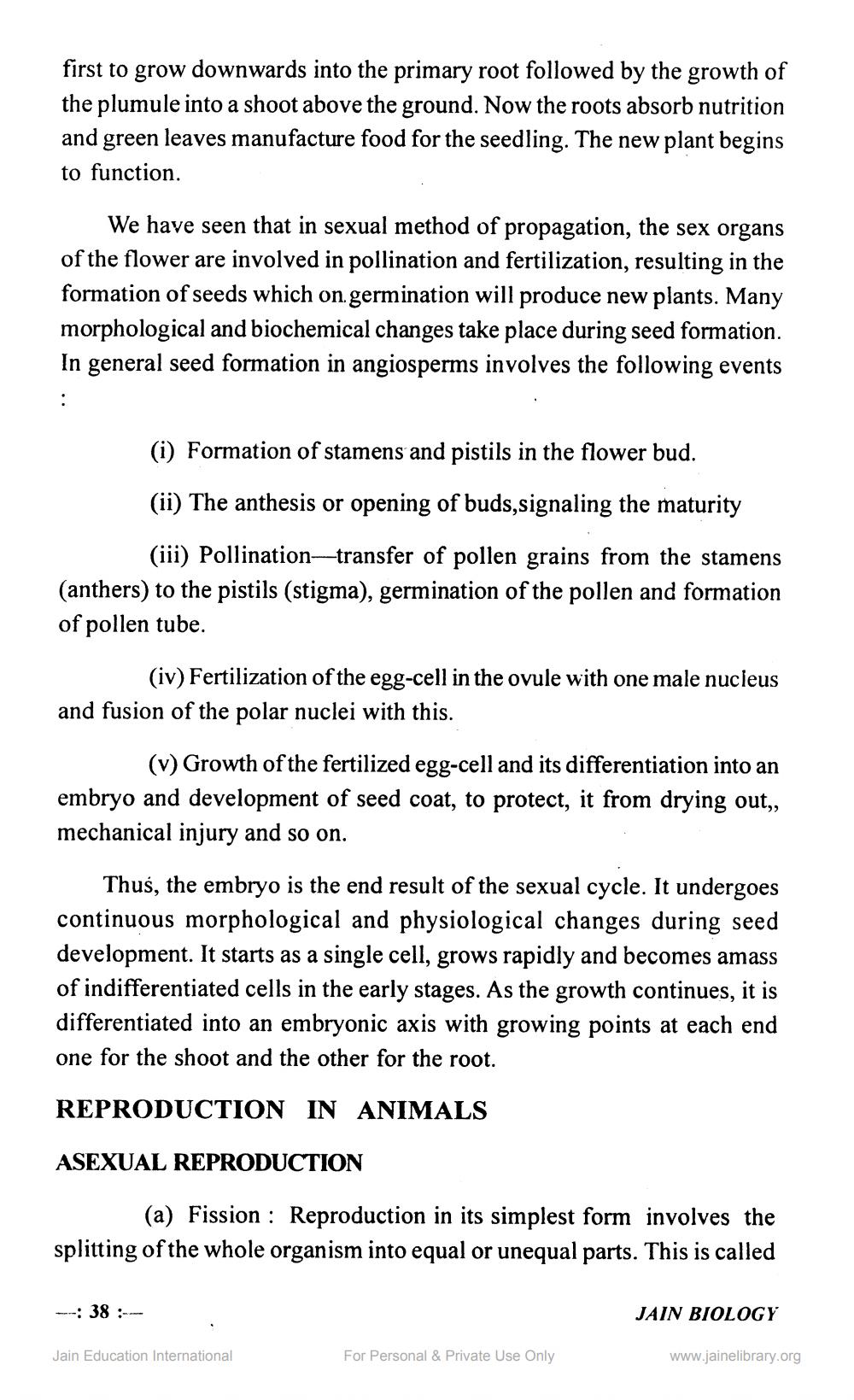________________
first to grow downwards into the primary root followed by the growth of the plumule into a shoot above the ground. Now the roots absorb nutrition and green leaves manufacture food for the seedling. The new plant begins to function.
We have seen that in sexual method of propagation, the sex organs of the flower are involved in pollination and fertilization, resulting in the formation of seeds which on.germination will produce new plants. Many morphological and biochemical changes take place during seed formation. In general seed formation in angiosperms involves the following events
(i) Formation of stamens and pistils in the flower bud.
(ii) The anthesis or opening of buds,signaling the maturity
(iii) Pollination--transfer of pollen grains from the stamens (anthers) to the pistils (stigma), germination of the pollen and formation of pollen tube.
(iv) Fertilization of the egg-cell in the ovule with one male nucleus and fusion of the polar nuclei with this.
(v) Growth of the fertilized egg-cell and its differentiation into an embryo and development of seed coat, to protect, it from drying out,, mechanical injury and so on.
Thus, the embryo is the end result of the sexual cycle. It undergoes continuous morphological and physiological changes during seed development. It starts as a single cell, grows rapidly and becomes amass of indifferentiated cells in the early stages. As the growth continues, it is differentiated into an embryonic axis with growing points at each end one for the shoot and the other for the root.
REPRODUCTION IN ANIMALS
ASEXUAL REPRODUCTION
(a) Fission : Reproduction in its simplest form involves the splitting of the whole organism into equal or unequal parts. This is called
--: 38:
JAIN BIOLOGY
Jain Education International
For Personal & Private Use Only
www.jainelibrary.org




